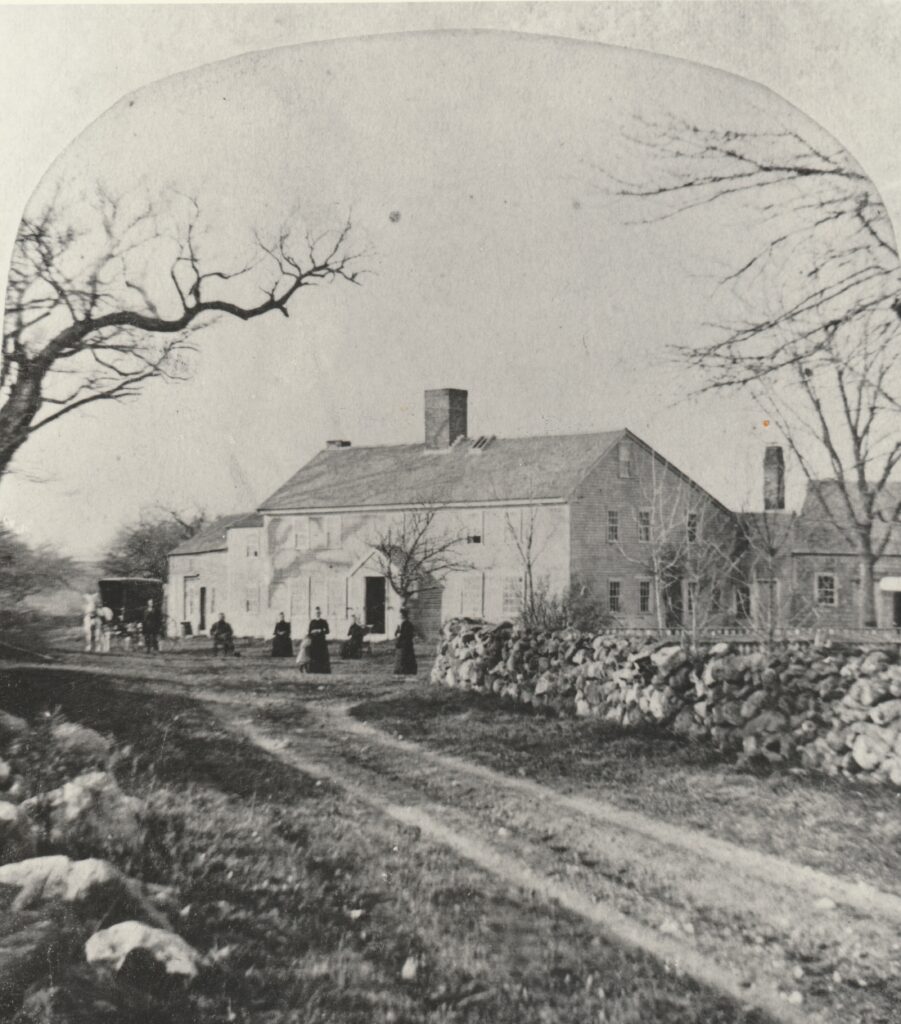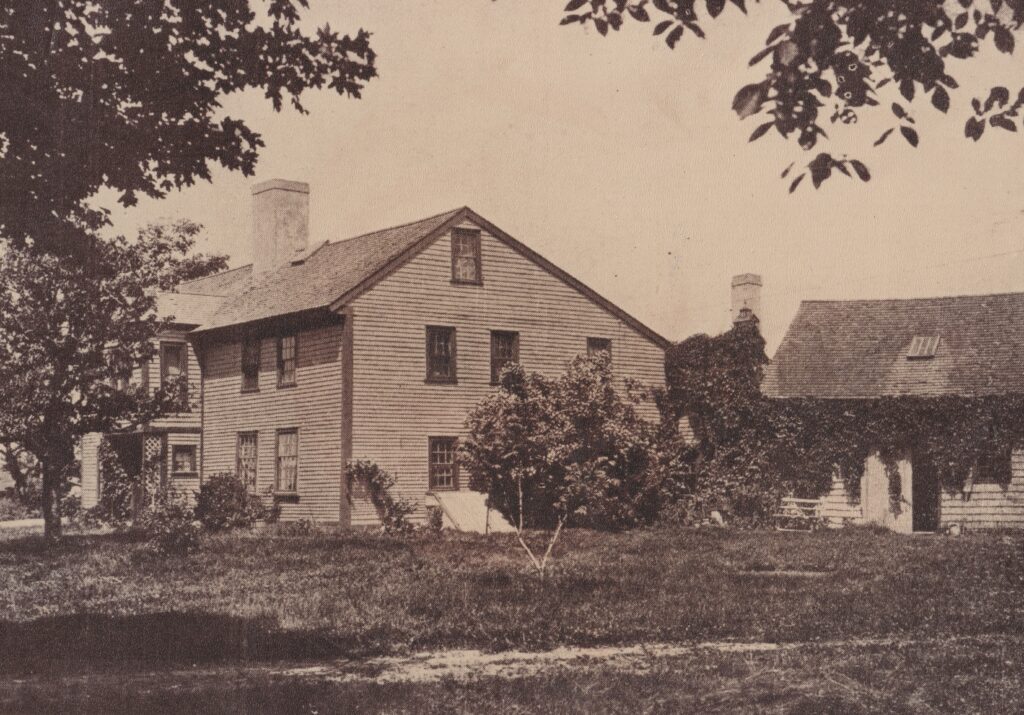The Nathaniel Felton Senior House was among the first homes built on Mount Pleasant in the Brooksby area of Salem (now Peabody) around the year 1644. The house was occupied for almost two centuries by the Felton family, most notably by Nathaniel Felton and his son of the same name, who famously defended their neighbor, John Proctor, during the Salem witchcraft trials.
In 1635, Nathaniel Felton Senior, at the age of 20, his mother Eleanor, and his two sisters, Judith, age 14, and Margaret, age 12, left Great Yarmouth, England to start a new life in Salem.
Upon the family’s arrival in Salem Town, Eleanor acquired a 20-acre lot and house on the water at what is now Bridge and St. Peter streets (opposite the site of the Salem jail). Before 1637, she was one of the first members of the First Church in Salem; church membership was a significant sign of status in the community.
In 1636, Ellen Felton was granted 20 acres of land on the hill between Lowell and Andover Streets. In 1637, she was granted 20 more acres, and Nathaniel was granted 2 acres. In 1639, Ellen was granted an additional 30 acres. The area became known as Felton Hill, Mount Pleasant, Hog Hill and Indian Pound (the indigenous peoples had created a fenced area for swine at this location, and it was later used by the English for the same purpose). Between 1637-1645, Nathaniel Felton was absent from Salem Town for long periods of time, presumably clearing the land and building the homestead. The process of clearing the land took decades, so Nathaniel would have planted wheat and corn, which could grow relatively easily between the trees. The Feltons also had an orchard. A barn was located near the house for livestock, tools and grain. Other outbuildings may have included a woodshed, pigsty, chicken coop, or smokehouse. To return to his mother’s house in Salem Town, Nathaniel would have boarded his canoe at the intersection of Sylvan and Water Streets and rowed down the Cow House River (also called Waters River).
Around 1644, Nathaniel Felton Senior, his wife Mary Skelton, and their children, settled into their new homestead. The house was probably located at the base of the hill behind the Junior House. Verbal assertions passed down through generations of Felton family members tell the following story about the development of the property: the house consisted of two rooms, one on the first floor and a loft on the second, with a huge chimney on the west end (left side when facing the house) and a lean-to in the back. In 1683, Nathaniel Felton Jr., son of Nathaniel Sr., built an addition for his family onto the west end. It was also one room deep and two stories high, with the chimney on the east end.
In 1746, the house was sold by Skelton Felton (Nathaniel Jr.’s son) to his cousins, Samuel and Malachi Felton. During their ownership, the brothers separated their halves and moved them. Samuel, a weaver, moved the Nathaniel Felton Senior House, the older half, to its present location. Of the 7 Felton generations to live in the home, 6 were named Nathaniel! When Nathaniel Ward Felton died, the home was inherited by his sister Harriet Felton Rhoades – a teacher, a world traveler and widow to sea captain, Charles Rhoades.

Nathaniel Felton Senior House
Photograph dates from 1890 to 1900

Nathaniel Felton Senior House, 1906
In 1902, Joseph Newhall Smith bought the Nathaniel Felton Senior House from Harriet Felton Rhoades, the last Felton to live in the home. However, she sold the home with the stipulation that she could remain in the home until her death. She died in 1918 at the age of 90. The Smith family continued to use the property as a summer estate.
In 1982, Janet Smith, the granddaughter of Joseph N. Smith, bequeathed the Senior House and an additional 8 acres of land to the Peabody Historical Society and Museum. Around this time, the City of Peabody purchased 200 acres from the trustees of the Smith estate, and now maintain Brooksby Farm as a working farm and recreational area.
Both the Nathaniel Felton Senior and Junior Houses are listed on the National Register of Historic Places. While the Nathaniel Felton Senior and Junior Houses have been altered over the past three centuries, the properties retain many components of their original construction.
